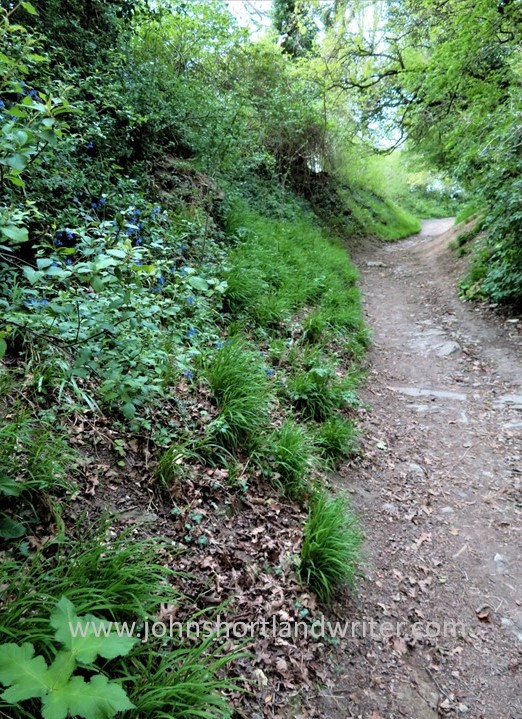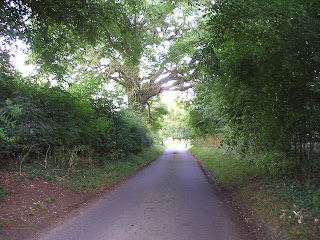a walk with dinosaurs and romans
One of the perks of getting older is retirement or, in my case, semi-retirement. Suddenly, I no longer need to keep checking my watch to see if I have enough time to do things without racing onto something or somewhere else. It has given me time to re-visit some of the pleasures that I enjoyed in the past. One of these is walking. When I was much younger I used to walk the long-distance footpaths and trails that were then just beginning to be created. Now there are literally dozens of them to be enjoyed varying in length from a few dozen miles to several hundred. I’m not up to the lengthy walks of my youth yet – the longest took a fortnight to complete. At present, I’m content to be out for a few hours and, hopefully, the mileage will increase over time.

The other day my partner and I decided to visit the Roman villa at North Leigh not far from the small, Cotswold town of Woodstock. Unlike the Roman villa where you rarely see anyone, Woodstock is visited by thousands of international visitors every year, for it is where Blenheim Palace, a World Heritage Site, is located. The two houses, six miles apart in distance but fifteen hundred years apart in their building, are very different. Whereas the Palace is full of priceless treasures, all that is left of the villa are the foundations and a single mosaic floor. At its peak in 300AD, the villa was one of the largest in Britain with suites of rooms, many mosaics and several baths. Now it is quiet, wildflowers scramble over the walls and it is set in glorious countryside close to the River Evenlode. With parking close-by, this was the starting point for the walk.


The path to the villa and those leading away from it are well maintained and marked, making the trail easy to follow. Most of the route we took was on the network of public footpaths that criss-cross England, most of them dating from the time when all travel was either on foot or horse. At one point, the paths joined the Oxfordshire Way, a path of 66 miles in length. This in turn links to other long-distance paths so how long you walk for is entirely up to you! After ten minutes or so, the Evenlode was reached and crossed. Originally known as the Blade, its present name is relatively modern, first being recorded in use in the 1880s. It meanders through the Cotswolds for nearly fifty miles before entering the River Thames. Crossing the river, the path turns to the west and the country changes in character with steep grassy banks rich in wildflowers rising high to our right, the river to our left. Here we’re walking along Akeman Street, an ancient Roman road, once busy but now a quiet, grassy track.


Before long, the character of the path changes once more. The Evenlode changes in character too for there is a wide ford – perfect for wild swimming. Various paths meet here but we walked the steep path towards the village of Stonesfield, known locally for its history of making the stone rooftiles that are a feature of old Cotswold properties. In pre-history, the Cotswold Hills were submerged by a warm sea and now fossils can be found quite easily; they can even be seen occasionally in the stones that have been used to build the houses. It was in the Stonesfield loose and flaky rock that the very first dinosaur fossil to be found anywhere in the world was discovered. Close to where it was found, a steel bench inscribed with the words of the French poet Hilaire Belloc has recently been placed – welcome indeed, after clambering up the steep path that leads from the ford to the village.



After a short walk along the edge of the village, our path left the Oxfordshire Way to descend steeply through meadows before reaching a strip of woodland, Stockey Plantation. Although there are firs planted there, there are also many native beech trees which are, arguably, at there most glorious at this time of year. The newly unfurled leaves are of the most intense green which, along with the deep blue of bluebells and the yellows of other spring flowers are almost too bright for the eyes to bear.



Leaving the woodland we reach the Evenlode ford once more but this time cross it – there is a footbridge, so no need to get wet – before striking off across the fields again to return by an alternative route to the Roman villa and the car beyond. The walk probably took no more than a couple of hours and is relatively easy. The weather, this April has been very dry. At other times, the paths can be muddy and so sensible, walking shoes or boots are recommended. The route we chose does have some steep hills to climb but these can be avoided for there are many paths that keep to the level ground. An Ordnance Survey map of the area is handy to work out routes – I used the app on my phone but paper maps covering all parts of the UK are readily available.


To see more photos of the Roman villa and read of its history take a look at one of my earlier posts by clicking on the link here.
To read the full text of Hilaire Beloc’s poem of the Evenlode river click here


Comments
Post a Comment